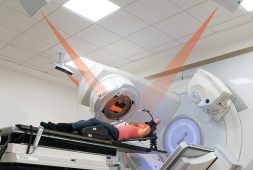
There have been several reported cases of HIV being cured. These have been connected to stem cell transplants that were originally designed for cancer treatment. In fact, a German man now is part of a handful of patients who received stem cell transplants for cancer and this resulted to no detectable levels of HIV that were once present in them.
After becoming a recipient of a stem cell transplant, a 53-year-old German man who had been diagnosed with HIV has lived for four years. The doctors tested him and they didn’t find any detectable levels of the virus in the body. Thus, they declared him as the fifth confirmed case of someone completely cured of HIV.
The man remains to be unnamed and is simply called the “Düsseldorf patient.” He is at least the third person cleared of HIV after going through this very delicate surgery that was meant to completely replace his bone marrow with HIV-resistant donor stem cells. This was per a case report published February 20 in Nature Medicine.
“In this case and others, cells that have a natural mutation that makes them resistant to HIV can achieve HIV remission and eventually a cure,” said Yvonne Bryson, MD. She is a professor and HIV specialist at the David Geffen School of Medicine at the University of California in Los Angeles. Dr. Bryson also led a research study of a New York patient that was also cured of the disease. However, she wasn’t part of the Düsseldorf case discussed.
ART Therapy Makes HIV Undetectable, but Not Considered a Cure
For a long time now, antiretroviral therapy (ART) has been administered to those living with HIV. The goal was to bring down the virus to almost undetectable levels. This means that the procedure prevents HIV from being passed on from one person to the next. While ART has largely changed HIV and turned it from a terminal illness to a manageable chronic condition, the immune system still has the ability to store reservoirs of the virus that may once more replicate and spread if ART treatment isn’t done continuously.
The few confirmed cases of those cured of HIV involved those who already had no detectable levels of the virus in their bodies. This was even after long periods of time without resorting to ART. In the latest case, the Düsseldorf patient stopped ART in 2018. Since then, he had remained to be HIV-free.
Each Case of Complete and Total HIV Remission Were Stem Cell Transplants
For the first ever reported case of an HIV cure, a man who goes by as simply the “Berlin patient” lived with HIV in remission for 12 years before he passed away from cancer. He was the recipient of a stem cell transplant for leukemia. This time, the donor cells that he got coincidentally had a mutation that was able to block a protein known as CCR5, a protein that promotes and pushes HIV to invade the healthy cells of a person.
Scientists also reported what seemed to be an HIV cure in a second man called the “London patient” in 2019. After three years of this, the scientists said once more that two more potential cases of an HIV were cured, one was from New York and the other one was from California.
While this seems like hopeful news, it’s not likely that stem cell transplants will be performed in the near future for HIV patients who have not been diagnosed with leukemia. This procedure comes with several risks, according to the lead author of the latest case report, Björn-Erik Jensen of Düsseldorf University Hospital in Germany. He spoke about this in detail in a February 21 article in the journal Nature.
“This case is another proof of concept, but is not ready for scale-up and relevance to a broader population,” Bryson explained. “This provides additional hope for an HIV cure in those who have long-term HIV and also cancer requiring a stem cell transplant as part of the treatment.”
Antiviral Treatments Able to Prevent and Manage the Disease
A common HIV cure that come with stem cell transplants is still far into the future, but many can still do their share to prevent HIV or stay healthy when they have the virus in their bodies.
All over the world, almost 38 million people have HIV, and roughly 3 in 4 of them are recipients of ART, as per UNAIDS. ART can keep the virus at bay and at undetectable levels. This means that someone with HIV won’t be able to transmit the virus sexually. This is a prevention approach summarized by the NIH as “Undetectable=Untransmittable (U=U).”
As per the experts of the UK-based AIDS charity NAM, the almost one million people worldwide at high risk for HIV are those who are injection drug users and men who have sex with other men. They are on a different antiviral treatment regimen that the doctors refer to as preexposure prophylaxis (PrEP). This was designed to lower their risks for HIV. However, there are also several barriers when it comes to accessing this kind treatment, especially for the minorities. PrEP is said to be 99 percent effective at preventing the sexually transmitted HIV virus, and 74 percent effective at preventing HIV among those who use drugs using injections. This was what the experts from the Centers for Disease Control and Prevention (CDC) said.



